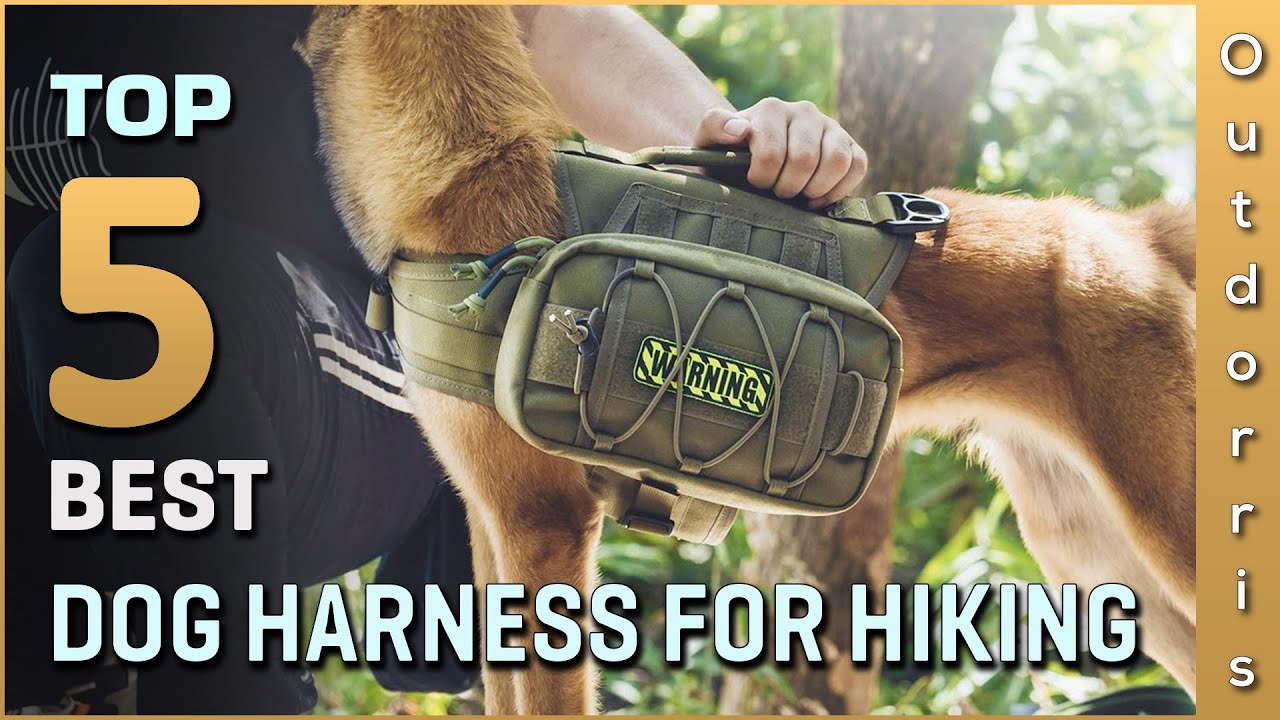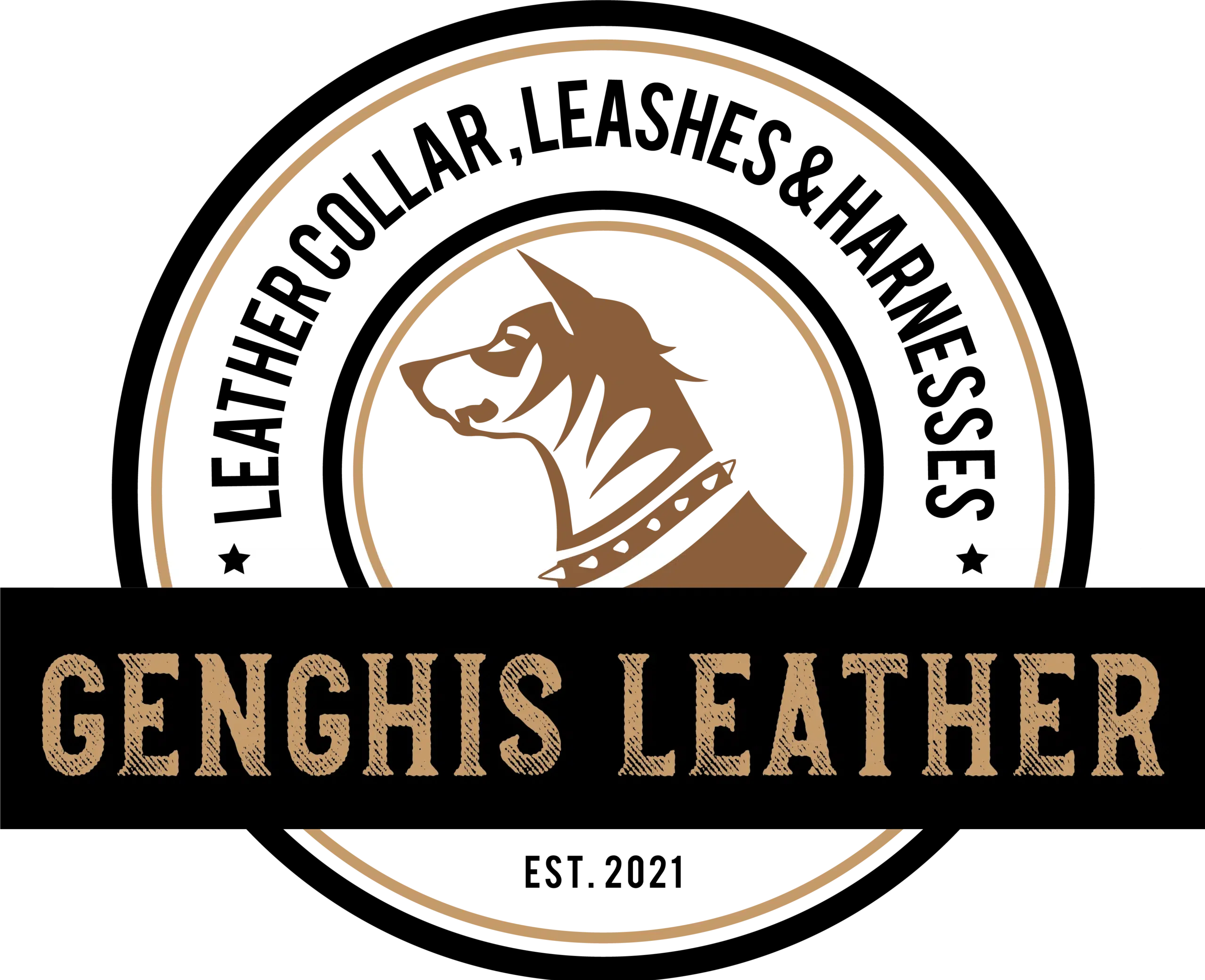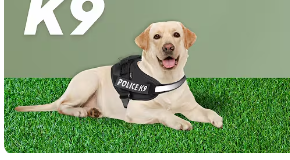K9 Harnesses for Dogs: 2024 Ultimate Guide to Safety and Comfort
When it comes to keeping our canine companions safe and secure, a reliable K9 harness is essential. But with so many options on the market, how do we choose the right one for our furry…
When it comes to keeping our canine companions safe and secure, a reliable K9 harness is essential. But with so many options on the market, how do we choose the right one for our furry friends?
We’ve spent years researching and testing various K9 harnesses to bring you the most comprehensive guide available. From military-grade designs to everyday walking harnesses, we’ll explore the features that matter most. We’ll cover durability, comfort, and safety standards, including harnesses rated for up to 7,000 lbs of force. Whether you’re looking for a harness for a 3-pound Chihuahua or a 180-pound Great Dane, we’ve got you covered. Join us as we jump into the industry of K9 harnesses and help you make the best choice for your four-legged friend.
Types of K9 Harnesses for Dogs
K9 harnesses come in various designs, each customized for exact purposes and dog types. We’ll explore three main categories: no-pull harnesses, tactical harnesses, and service dog harnesses.
No-Pull Harnesses
No-pull harnesses are engineered to discourage leash pulling, improving control during walks. These harnesses distribute force across the dog’s chest and shoulders, reducing strain on the neck. Key features include:
- Front-clip attachment points to steer dogs back towards handlers
- Padded chest plates for comfort
- Adjustable straps for secure fit
- Back-clip options for trained dogs
- Reflective strips for visibility in low light
No-pull harnesses are ideal for dogs in training or those prone to pulling. They’re available in various sizes, from small breeds to large dogs, ensuring a proper fit for optimal effectiveness.
Tactical Harnesses
Tactical harnesses are robust, designed for working dogs in high-stress environments. These harnesses cater to military, police, and search and rescue operations. Features include:
- Durable materials like 1000D nylon
- MOLLE webbing for attaching accessories
- Multiple attachment points for versatility
- Reinforced stitching for strength
- Handle for quick control and assistance
- ID patch panels for identification
Tactical harnesses often meet or exceed military standards, with some rated to withstand up to 7,000 lbs of force. They’re built to withstand harsh conditions while providing comfort for extended wear.
Service Dog Harnesses
Service dog harnesses are specialized for assistance dogs, providing functionality and identification. These harnesses are designed to:
- Clearly identify the dog’s working status
- Offer comfort for extended wear
- Provide attachment points for mobility assistance
- Include pockets for carrying essential items
- Feature adjustable straps for a custom fit
- Incorporate reflective elements for safety
Service dog harnesses often include removable patches or labels indicating the dog’s role. They’re designed to be lightweight yet durable, ensuring the dog can perform tasks comfortably throughout the day.
Key Features to Look for in a K9 Harness
When selecting a K9 harness for dogs, certain features are essential for optimal performance and safety. These key elements ensure the harness meets both the dog’s needs and the handler’s requirements.
Durability and Material Quality
Durability and material quality are paramount in K9 harnesses. High-quality materials ensure longevity and reliability, even under strenuous conditions. Look for harnesses made with heavy-duty Mil-Spec webbing, which offers quick-drying properties and resistance to mold and mildew. Top-tier K9 harnesses are strength-rated to withstand forces up to 7,000 lbs, providing exceptional durability for various applications. Professional-grade harnesses often incorporate superior design elements and high-quality materials to enhance overall durability. When evaluating a K9 harness, prioritize those with reinforced stitching and robust construction to ensure they can withstand the rigors of daily use and potential emergency situations.
Comfort and Padding
Comfort is crucial in K9 harnesses to prevent discomfort and potential injury to the dog. Seek harnesses designed with joint-friendly features that combine comfort with freedom of movement. Padded chest plates are essential components, providing both comfort and safety for the K9. Look for harnesses with skin-friendly inner liners to prevent chafing and irritation during extended wear. Ergonomic designs that distribute pressure evenly across the dog’s body contribute to overall comfort. Also, consider harnesses with breathable materials to regulate temperature and prevent overheating during physical activities. The ideal K9 harness strikes a balance between structural support and comfort, allowing the dog to move naturally while providing necessary restraint and control.
Adjustability and Fit
Proper adjustability and fit are critical for K9 harness effectiveness and the dog’s comfort. Look for harnesses with multiple adjustment points to ensure a snug, customized fit for various dog sizes and shapes. Adjustable chest and girth straps allow for precise fitting, accommodating changes in the dog’s weight or coat thickness. Quick-release buckles enhance ease of use and safety in emergency situations. Consider harnesses with size ranges that correspond to exact chest girth measurements, ensuring optimal fit.
For example, some harnesses offer size options for dogs weighing 50-65 lbs with chest girths of 25-33 inches, 61-88 lbs with 28-38 inch girths, and 88-150 lbs with 32-45 inch girths. A properly fitted harness prevents chafing, slipping, and potential escape, while maximizing comfort and control during use.
Benefits of Using a K9 Harness
K9 harnesses offer many advantages for dogs and their handlers. These specialized harnesses provide enhanced control, safety, and comfort for various activities.
Improved Control and Safety
K9 harnesses significantly enhance control and safety for both dogs and handlers. The top-mounted handle and leash attachment points allow for precise control, especially in challenging situations. Tactical K9 harnesses feature integrated handles that provide complete manual control, enabling handlers to lift or lower dogs during operations like climbing, rappelling, and helicopter applications. This improved control reduces the risk of accidents and injuries, particularly in high-stress environments or during training exercises. K9 harnesses also distribute force evenly across the dog’s body, preventing sudden jerks that could cause harm. With multiple attachment points, handlers can choose the most appropriate position for leash connection based on the activity or training scenario.
Reduced Strain on Dog’s Neck
K9 harnesses effectively minimize strain on a dog’s neck by distributing force across the chest and shoulders. Unlike traditional collars that concentrate pressure on the neck area, harnesses spread the load over a larger surface area. This design prevents potential injuries to the trachea, thyroid gland, and cervical vertebrae. Joint-friendly harnesses combine comfort with freedom of movement, allowing dogs to move naturally without restriction. The reduced strain is particularly beneficial for dogs prone to respiratory issues or those with existing neck problems. By alleviating pressure on the neck, K9 harnesses promote healthier breathing and reduce the risk of long-term damage caused by repeated pulling or sudden stops.
Versatility for Different Activities
K9 harnesses offer exceptional versatility, accommodating a wide range of activities and working scenarios. These harnesses are designed to support dogs in various roles, from everyday walks to specialized tasks. For military and law enforcement K9 units, tactical harnesses provide the necessary durability and functionality for demanding operations.
Search and rescue teams benefit from harnesses with reinforced lifting points and reflective elements for improved visibility. Service dog harnesses often include features like pockets for essential items and clear identification panels. For recreational use, K9 harnesses adapt to activities such as hiking, running, or swimming, offering secure attachment points and quick-drying materials. This versatility ensures that handlers can select a harness that meets their exact needs while maintaining optimal comfort and safety for their dogs.
Choosing the Right Size K9 Harness
Selecting the correct size K9 harness ensures your dog’s comfort, safety, and optimal performance. A well-fitting harness prevents chafing, allows freedom of movement, and enhances the effectiveness of the equipment for various activities.
How to Measure Your Dog
Accurate measurements are crucial for selecting the right size K9 harness. Start by measuring your dog’s chest circumference, the most critical dimension for harness fitting. Wrap a flexible measuring tape around the widest part of your dog’s chest, just behind the front legs. For neck measurement, place the tape around the narrowest part of your dog’s neck. Take measurements when your dog is standing in a natural position. Record these measurements in both inches and centimeters for easy reference when consulting sizing charts. For precise results, measure your dog multiple times and calculate the average. Remember that different harness styles may require additional measurements, such as body length or girth, so always check the manufacturer’s exact sizing guidelines.
Understanding Sizing Charts
Sizing charts are essential tools for selecting the appropriate K9 harness. These charts typically list dimensions for chest girth, neck circumference, and sometimes body length or weight. Match your dog’s measurements to the size ranges provided in the chart. If your dog’s measurements fall between sizes, opt for the larger size to ensure comfort. Pay attention to breed-exact recommendations, as some harnesses are designed with particular body types in mind.
Weight guidelines are often included but should be considered secondary to actual measurements. Remember that sizing can vary between brands and styles, so always refer to the exact chart for the harness you’re considering. Some charts may use different terminology, such as “girth” instead of “chest circumference,” so familiarize yourself with common terms used in sizing guides.
Proper Use and Care of K9 Harnesses
K9 harnesses require proper use and maintenance to ensure optimal performance and longevity. We’ll explore the correct methods for putting on and adjusting a harness, as well as essential cleaning and maintenance tips.
Putting on and Adjusting the Harness
Proper fitting and adjustment of a K9 harness are crucial for your dog’s comfort and safety. Follow these steps to ensure the harness fits correctly:
- Measure your dog’s chest girth and neck size accurately.
- Choose the appropriate harness size based on the manufacturer’s sizing chart.
- Unbuckle all straps and lay the harness flat.
- Guide your dog’s head through the neck opening or have them step into the harness, depending on the design.
- Fasten all buckles securely, starting with the chest strap.
- Adjust the straps to achieve a snug but comfortable fit.
- Ensure you can fit two fingers between the harness and your dog’s body.
- Check for any signs of chafing or restriction of movement.
- Allow your dog to walk around to confirm the harness stays in place.
- Make final adjustments as needed for optimal fit and comfort.
- Check the harness for signs of wear or damage before each use.
- Clean the harness regularly based on usage frequency and environmental conditions.
- Use mild soap and lukewarm water for routine cleaning.
- Avoid harsh detergents or chemicals that may damage the material.
- Scrub gently with a soft brush to remove dirt and debris.
- Rinse thoroughly to remove all soap residue.
- Air dry the harness completely before use or storage.
- Avoid direct sunlight or heat sources when drying to prevent material degradation.
- Store the harness in a cool, dry place when not in use.
- Inspect and replace any worn or damaged components promptly.
- Follow the manufacturer’s exact care instructions for your harness model.
- Consider using a protective spray to enhance water resistance and durability.

Training Your Dog to Wear a K9 Harness
Training a dog to wear a K9 harness is crucial for various activities, including working, rescue operations, and everyday walks. Proper training ensures the dog’s comfort and safety while wearing the harness.
Positive Reinforcement Techniques
Positive reinforcement is key to successfully training a dog to wear a K9 harness. Start by introducing the harness gradually, allowing the dog to become familiar with its sight, smell, and feel. Place the harness near the dog, then progress to putting it on for short periods while rewarding with treats and praise.
Use treats, affection, and verbal praise when the dog remains calm and comfortable while wearing the harness. This approach encourages the dog to associate the harness with positive experiences. Carry out desensitization and counterconditioning techniques if the dog shows signs of discomfort or anxiety. Gradually increase exposure to the harness while providing positive reinforcement.
Practice short training sessions, focusing on rewarding the dog for calm behavior while wearing the harness. Extend the duration of wear as the dog becomes more comfortable. Combine harness training with other enjoyable activities to create positive associations.
Common Challenges and Answers
Many dogs initially resist wearing a K9 harness. Common challenges include anxiety, discomfort, and attempts to remove the harness. To address anxiety, start with short periods of wear and gradually increase duration. Use calming techniques and provide distractions during initial fittings.
If the dog shows discomfort, check the harness fit and adjust as needed. Ensure the harness doesn’t chafe or restrict movement. Some dogs may try to chew or paw at the harness. Redirect this behavior with toys or training exercises, and never leave the dog unsupervised while wearing the harness until fully acclimated.
For dogs that freeze or refuse to move while wearing the harness, encourage movement with treats or toys. Start indoors in a familiar environment before progressing to outdoor walks. If the dog continues to struggle, consult a professional dog trainer for personalized guidance and support in harness training.
Conclusion
K9 harnesses are essential tools for dog owners seeking safety comfort and control. We’ve explored various types suitable for different needs from everyday walks to specialized tasks. Remember to prioritize durability comfort and proper fit when choosing a harness. With the right K9 harness you’ll enhance your dog’s safety and improve your handling experience. Whether you have a small companion or a large working dog there’s a perfect harness waiting to make your adventures together safer and more enjoyable.

